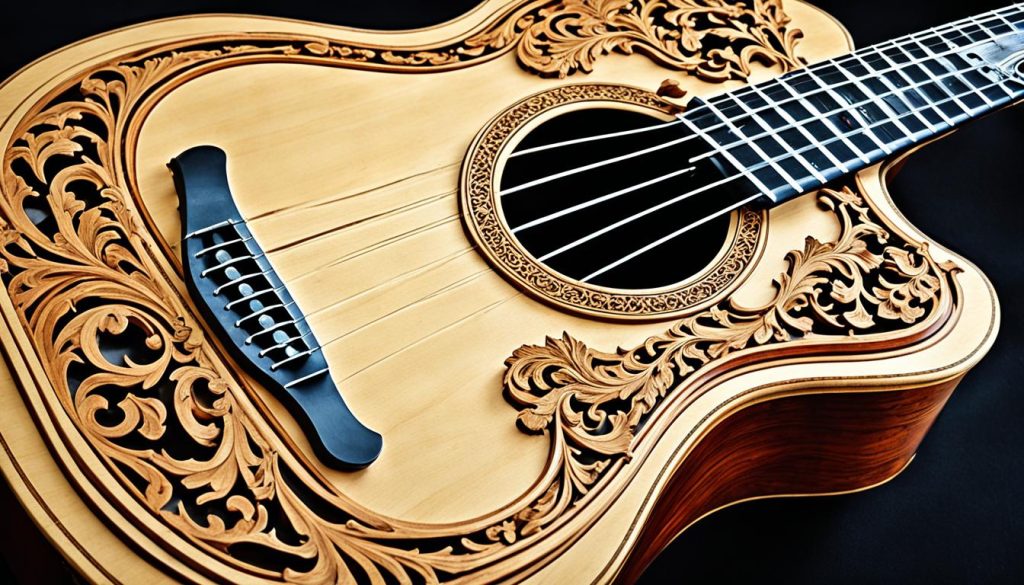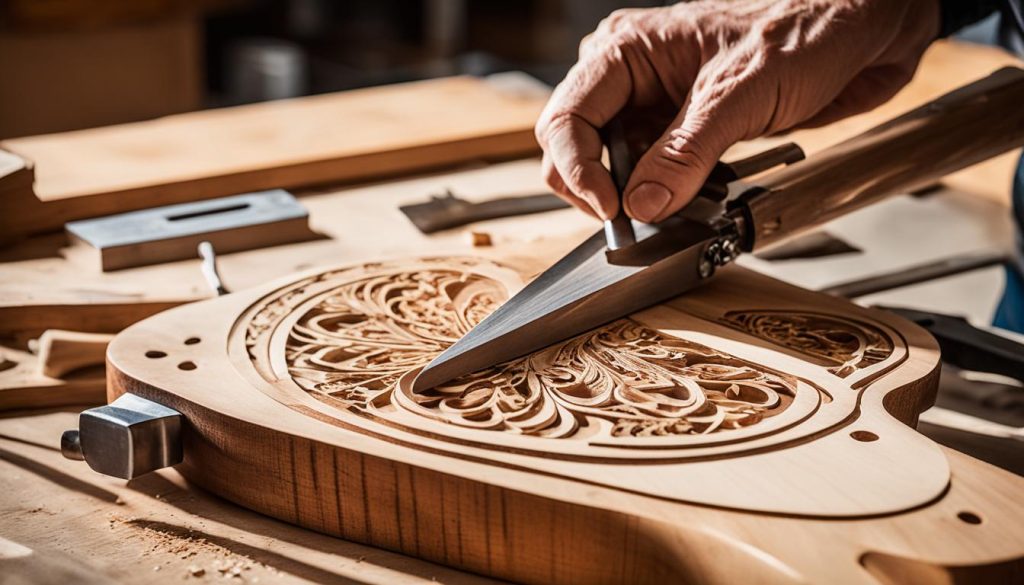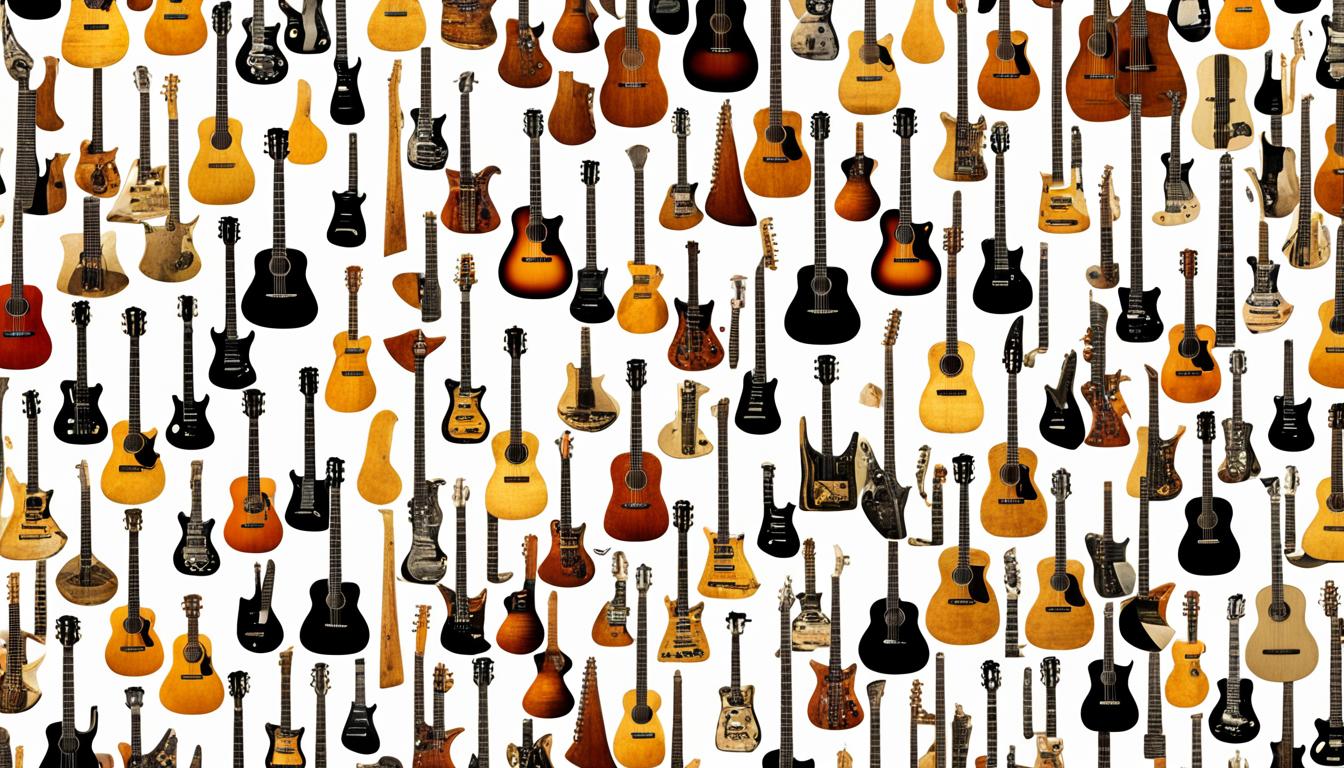Imagine the gentle hum of a luthier’s workshop, the scent of varnished wood in the air, and the echo of a newly strung instrument’s first chord. This is where your journey begins—a timeless passage through the rich tapestry of guitar history. The guitar, one of the world’s most storied musical instruments, offers a fascinating tale not just of craftsmanship but of humanity itself.
Long before the modern guitar graced today’s stages, its ancestors were already setting the rhythm of ancient societies. Throughout this narrative, you will discover how the cross-pollination of global influences contributed to the guitar’s journey. The guitar’s versatile voice has mirrored societal shifts, from the intimate chambers of royalty to the electrifying roar of contemporary arenas.
As we explore the many incarnations of guitars across eras, your appreciation for this beloved instrument will deepen, chord by chord, melody by melody. Embark on this melody-infused odyssey, where each string plucked and every note played tells a story—a musical manuscript of human experience. Your understanding of the guitar will transcend from a mere instrument to a chronicle of stringed instruments evolution, echoing through the halls of history.
Uncovering the Roots: The Ancestors of Modern Guitars
Exploring the history of music takes us back to ancient times. The journey of modern guitars starts with old stringed instruments. The lute and the baroque guitar are key to understanding how today’s guitars evolved. The lute, known for its deep sound and unique shape, was a favorite in medieval and Renaissance courts.

The shift from the Renaissance lute to the baroque guitar is a big part of music history. These old instruments were more than just for fun; they were crucial in European culture. The baroque guitar, with its new design and easier play, became popular in the 17th century. It opened up new ways to make music.
These old stringed instruments were not just for music. They played a big role in sharing culture, affecting how instruments were made and the music itself. Looking back, the change from the ancient lute to the elegant baroque guitar shows how technology and music tastes have changed over time. This led to the guitars we love today.
Innovation and Craftsmanship: The Golden Age of Luthiers
Step into a world where guitar-making traditions were taken to new heights. During this golden age, skilled luthiers in Europe were more than craftsmen; they were innovators. They improved every part of guitar making. Imagine being in a workshop filled with the sounds of creation—sawing, chiseling, and tuning.

Think about the legacies of luthiers like Antonio Torres and Christian Frederick Martin. Torres changed the guitar’s size and shape for better sound. Martin introduced X-bracing, making the steel-string guitar stronger and more resonant.
Their work changed guitar-making traditions from a simple craft to a complex science. By using math in their designs, these renowned luthiers made guitars sound better. They inspired many builders to follow their lead. Their commitment to craftsmanship and constant pursuit of perfection still motivates today’s guitar makers.
Every chord you play on a modern guitar reflects the innovations of this golden age. Even though tools and techniques have changed, the high standards and passion of early luthiers live on. Their lasting impact shows they were not just makers but artists who shaped music for years to come.
The Dawn of the Six-String: Transformations in the 19th Century
The 19th century was a key time for the evolution of the six-string guitar. It was when the basic idea of what a guitar could be started to change a lot. The move to six strings wasn’t just about adding more strings. It changed everything about the classic guitar design we know today.
Antonio de Torres was a key figure in this change. He made big improvements to the guitar’s design and sound. His changes made the guitar louder and richer in tone. This was important as music halls got bigger and needed instruments that could fill them.
Switching to six strings also made tuning easier, which helped guitar music grow and get more complex. This made the guitar a more flexible instrument. It could express a wide range of music, and it’s still true today.
This period showed how important design, function, and creativity are in music. When you hear a guitar, think about how its design and sound came from the changes in the 19th century. It’s a key part of the six-string guitar’s story.
The Evolution of the Guitar: A Historical Perspective (This H2 seems repetitive as it matches the H1; therefore, a slight rephrasing is provided)
The guitar’s story in music history is more than just its design changes. It’s about how it has changed culture. From classical and folk to rock and jazz, the guitar has played a big part. Each era shows a big change in society, often led by the sounds of guitars.
Musicians and their fans have shaped the guitar over time. Rock music made the electric guitar popular and changed culture in many ways. It affected fashion, language, and lifestyle across many generations. This shows how the guitar has deeply influenced culture.
The switch from acoustic to electric guitars was a big change. It was needed for louder sounds in big places. This shows how the guitar has adapted to music’s needs and changed with culture.
Electrifying the Sound: The Birth of the Electric Guitar
Imagine a time when guitars could only fill a small room. Then, the electric guitar came along, changing everything. This moment was key to the 20th-century music breakthroughs. Musicians could now play without being limited by their instruments.
Guitars became the stars of the show with new amplification technology. Artists could control volume, sustain, and distortion. This change was huge, not just in tech but in culture too. It led to new music styles and gave a voice to rebellion and revolution.
Les Paul and Leo Fender were key to this change. They made history with their electric guitar designs. Their work led to rock ‘n’ roll and many other genres. These guitars became symbols of creativity, reflecting the changing world around us.
The electric guitar started a new chapter in music history. It was a revolution that let a whole generation be heard. When you play an electric guitar, you’re carrying on a legacy that touches people worldwide.
The Modern Era: Diversity in Form and Function
Welcome to the modern era, where guitars show off the endless creativity of musicians around the world. Whether you like the deep sounds of acoustic guitars or the bold sounds of electric ones, there’s a wide range of choices. Modern guitar makers use new technologies and materials to make guitars better than ever.
Looking at today’s guitars, you’ll see they’re made for different music styles and playing ways. They go from warm sounds perfect for jazz and blues to strong sounds for rock and metal. These guitars are made to make every performance better. They focus on being easy to play and comfortable, so every musician can find one that feels right.
Customization is big in modern guitar design. You can change everything from the body shape and color to the pickups. This lets you express your unique style through your guitar. With these advances, guitars keep getting better, meeting the needs of musicians in a changing world.
In conclusion, whether you prefer acoustic or electric guitars, today’s guitars offer a lot of variety and sophistication. Step into the modern era and let your music be as varied and exciting as the guitars you play.
Conclusion
The guitar’s legacy is as rich and vibrant as the many chords it can play. From its early beginnings to today, it has changed music and culture in big ways. You, as a musician, are part of a long line of artists that goes back to the first luthiers and looks forward to future guitarists. The guitar is more than just an instrument; it’s a piece of history that keeps evolving and changing music.
The guitar has changed a lot over time, with each era adding its own chapter to its story. Now, it’s a symbol of creativity around the world. It lets artists share feelings, stories, and messages that everyone can understand, no matter what language they speak. Its ability to fit into almost any music style has made it a global language for all ages.
Looking to the future, the guitar’s future looks bright. New materials and digital tech will shape its future. The search for new sounds in music shows that the guitar will keep being a key part of music for years to come. For both new and experienced guitarists, the guitar is a canvas for endless creativity. It shows its lasting appeal and hints at new musical adventures yet to come.

